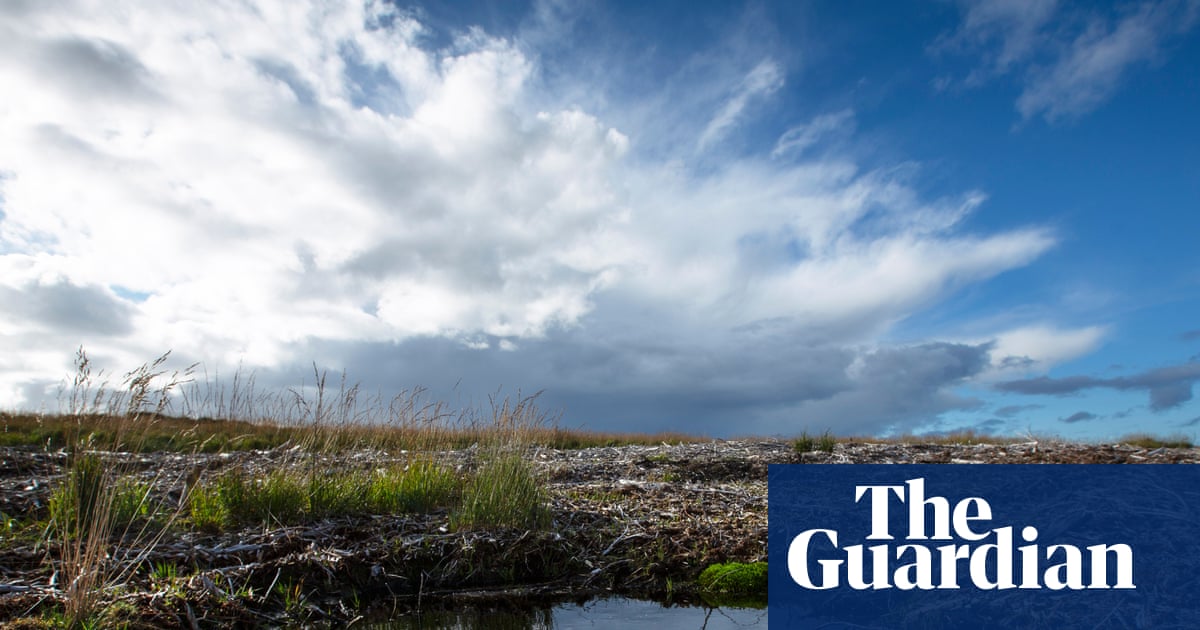Private investors are in talks about spending tens of millions of pounds on government-backed nature restoration projects in Scotland, the country’s conservation agency has said.
NatureScot said its so-called nature investment partnerships were on course to raise more than £100m for up to 15 projects, as it sought to fend off detailed criticisms of its fundraising efforts by an economics thinktank.
In a new report, Future Economy Scotland (FES) said relying on investors such as banks, pension funds and asset managers was wasteful and counterproductive, because their primary concern was making a profit, not tackling the climate or nature emergencies.
NatureScot has been under intense pressure to bolster the modest grants it receives to meet ambitious Scottish government targets to restore peatlands and natural ecosystems. Woodland creation funding for the agency Forestry and Land Scotland has also been cut recently.
Scotland has repeatedly missed its woodland and peatland restoration targets. It wants to plant about 200,000 hectares (494,211 acres) with trees by 2032, partly to meet its climate targets, but has missed every annual target.
Analysts believe tree-planting can attract investors by earning carbon credits and adding financial value. However, peatlands offer far lower financial returns, are rarely used for carbon offsetting and are costly to restore.
About 1.3m hectares (3,212,370 acres) of Scottish peatland are degraded, and are Scotland’s largest single source of emissions from land use, releasing 6.3m tonnes of CO2 equivalent in 2022. NatureScot estimates it could cost more than £3bn to restore that area, yet since 1990 only 99,200 hectares (245,129) have been revived, far short of the target to complete 250,000 hectares (617,763 acres) by 2030.
Government advisers warn there is “a very high risk” Scotland will miss its 2045 net zero target, largely due to its failures to restore peatland.
“This is a huge problem, which is staring us in the face,” said Laurie Macfarlane, director of the FES. “Thinking that commercial investors are going to fix things is foolhardy; there is not the money there. We need fresh thinking.”
It should replace grants with interest-free government loans, repayable if the landowner sells the carbon credits for a profit in future, Macfarlane said, as well as annual operations payments. FES calculated doing so would cost an extra £40m a year, to cover loans which could not be recovered.
To widespread scepticism, NatureScot originally claimed in March 2023 a new private financing strategy could “mobilise” £2bn to fund nature recovery projects over the next 30 years.
That claim from the then biodiversity minister Lorna Slater was linked to a widely criticised estimate of a £20bn gap between the overall costs and available funding for nature recovery in Scotland.
Since then, a proposed pilot project to restore Atlantic rainforest has been dropped; one of the first business partners, Lombard Odier, has pulled out; and NatureScot failed to launch a woodland project in the Scottish Borders worth up to £300m in spring 2023 as promised.
after newsletter promotion
NatureScot has now set a much lower initial target of raising £100m for its renamed Nature Investment Partnership (aCANIF), which is being run with the Edinburgh-based investment company Aberdeen.
So far, the partnership has only confirmed a £50m commitment from the UK government’s national wealth fund, but NatureScot insisted it was in talks with private investors who could provide more than the £100m initially envisaged, for 10 to 15 large, privately funded projects.
The Borders woodland project was still being worked on, it said, while the £2bn figure remained an aspiration and “an indication of the long-term potential scale of private finance.”
“As this development work is currently live and not finalised legally, we are unable to publicly disclose further details,” NatureScot said, adding that the FES analysis was useful but ignored the fact that grants made up only part of the spending needed for nature restoration.
Brendan Turvey, NatureScot’s nature restoration manager, said: “We are working on a wide range of approaches including investment, philanthropy and blended finance to increase investment in nature to help us restore Scotland’s nature.”



